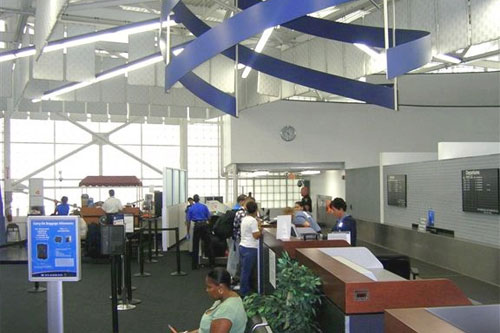Tweed Gauges Demand for Flights to Washington, D.C., Other Destinations
/Tweed New Haven Regional Airport, the City of New Haven and the Greater New Haven Chamber of Commerce are currently soliciting feedback from businesses regarding existing air travel patterns and expenditures, as well as anticipated air service needs this year. The survey is intended to quantify the demand for air service and to pinpoint the most critical destinations sought by local businesses. Of particular interest: Dulles Airport in Washington, D.C. A recent email from the New Haven Manufacturers Association to members of the association, for example, seeks opinions regarding travel to the nation’s Capital. The email asks two questions:
- Does your company have a need to be in the DC area on a regular basis?
- If so how many flights a month would you estimate you company would use?
Under consideration is service that would include three flights down and three flights back each day, Monday - Friday, “which means you could be there and back within the day.” Though Dulles is outside of DC, the email continues, “the Silver Line train will soon be connecting the airport to the DC subway system.”
In urging participation in the survey, officials note that “with accurate information regarding the potential market for increased destinations, the airport can make a compelling case for additional flights and carriers.” The survey is also posted on the Tweed New Haven website.
Currently, Tweed’s flights to Philadelphia are the airport’s primary gateway hub. The airport’s website highlights “Fly first to Philadelphia and connect to hundreds of destinations for less that it would cost to drive and park at our other nearest airports. These costs in time, stress, and dollars are seldom counted in the cost of travel.” Tweed offers US Airways Express service to and from Philadelphia International Airport, currently three flights a day. US Airways is currently in the midst of merging with American Airlines. 
Tweed New Haven Airport Authority manages and operates Tweed New Haven Regional Airport under a long term lease from the City of New Haven, according to the Chamber of Commerce website. Chartered by the State legislature, the Authority is a 15-member board of directors appointed by the mayors of New Haven and East Haven and by the South Central CT Regional Council of Governments. The Airport is operated by the firm of AvPORTS and administered in part by Chamber staff.
“Improving scheduled air service and the physical infrastructure at Tweed is considered the #1 economic development priority of the region,” the Chamber website points out.































